| Architect |
Designed by
scientists at Daresbury Laboratory Built by Costain Limited |
| Date Built |
Formally
opened by the Queen on October 19, 2007 |
| Location |
Harwell
Science Park, near Didcot |
| Description |
|
|
This silver
doughnut-shaped building, located in the
Oxfordshire countryside near Didcot, is
home to the Diamond Synchrotron, a huge
scientific machine, half a kilometre in
circumference, designed to produce very
intense beams of X-rays,
infrared and ultraviolet
light. Access to the synchrotron
building is made through the Diamond
Building, shown below, ....
 ... and then across this bridge into the experimental area.  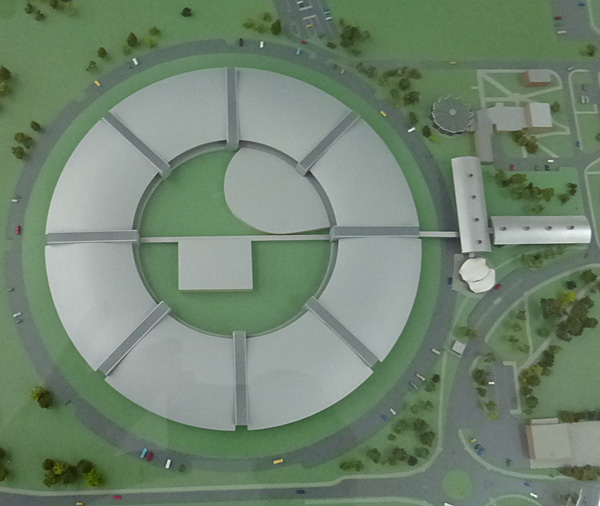 ********************************
The intense beams
of light generated by the synchrotron
make it possible for scientists to
study small objects like molecules and
atoms. The light is 10 billion
times brighter than the sun. The
process begins in the electron gun,
which is comparable with the cathode
ray tube that used to be at the heart
of television sets. The Electron
Gun fires electrons into the
machine. These electrons enter
the linear accelerator (Linac), the
Booster Synchrotron and then the
Storage Ring. By the time the
electrons enter the storage ring they
are traveling fast enough to circle
the Earth 7.5 times a second.
The Storage Ring appears to be circular but it is in fact a tetracontakaioctagon, a 48 sided polygon. It is made up of 48 straight sections angled together with 48 powerful magnets that force the electrons to bend around the track. The circumference of the Diamond Synchrotron is large enough that the footprint of St. Paul's Cathedral could fit inside it 5 times. The light traveling around the Storage Ring can be channeled off down the Beamlines at the end of which are a series of experimental stations where the light is used for a wide variety of research projects both public and private. 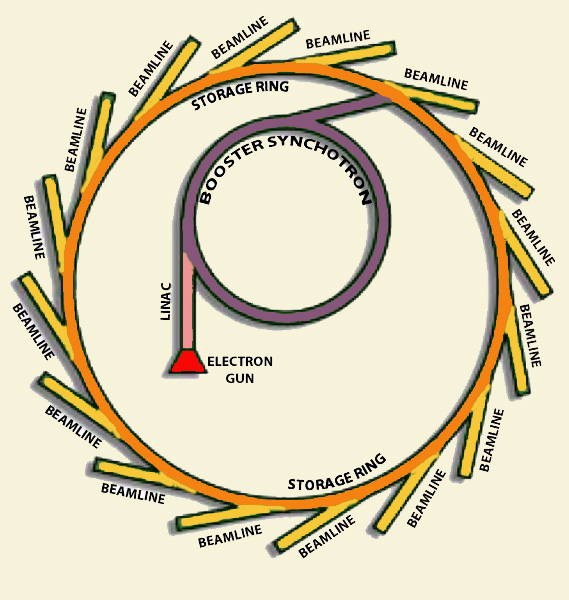 The Diamond website
points out that, "Phase I
construction began in early 2003
with the first seven beamlines
opening to users in January 2007.
Construction of the 15 Phase II
beamlines was completed in 2012.
Phase III of construction will
bring the number of beamlines at
Diamond up to 32 by 2018."
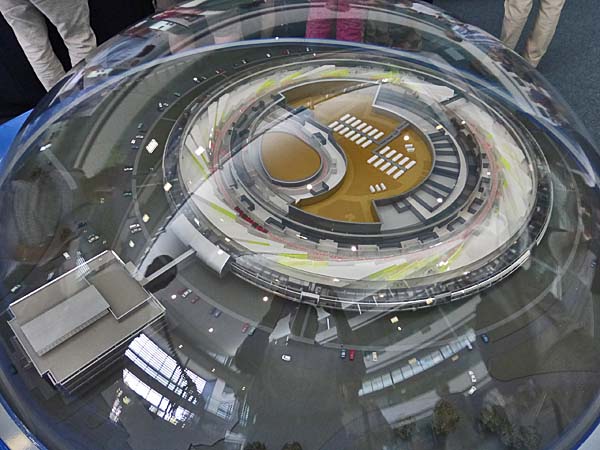   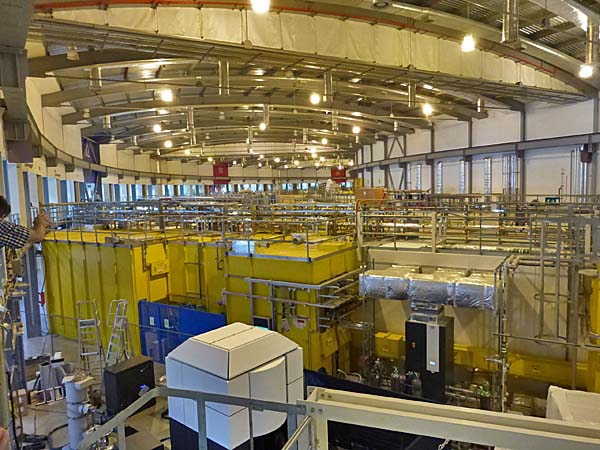 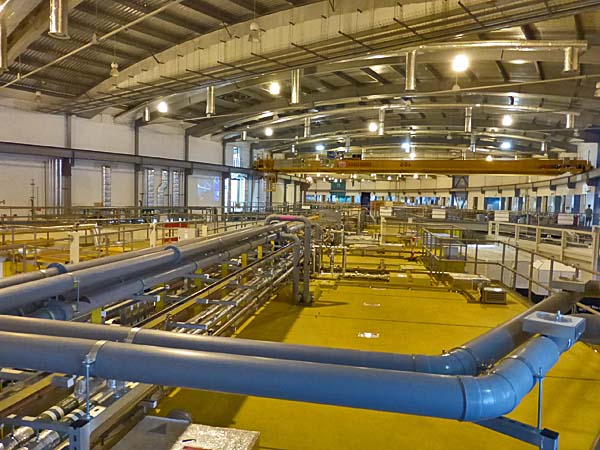 **************************** In a paper
entitled "STABILITY OF THE FLOOR SLAB
AT DIAMOND LIGHT SOURCE", Kay, K.
Baker, W.J. Hoffman and I.P.S. Martin,
explain that, "... As with all
light sources, a very stable floor
slab is an essential requirement
for the effective utilisation of
high brightness photon beams.
... Diamond has a circular
building of outer diameter 235m
employing a steel frame with 96
equally spaced columns at the
inner and outer circumference
mounted on pad foundations. The SR
tunnel is built on an 850mm thick
reinforced concrete slab and the
EH slab is 600mm thick. These
slabs are cast together with no
open radial or circumferential
joints between them and are cast
onto a network of 600mm diameter
piles, each 12-15m deep and
arranged on a 3m grid."
The image below shows the huge number
of piles that form the foundation for
the stable floor.
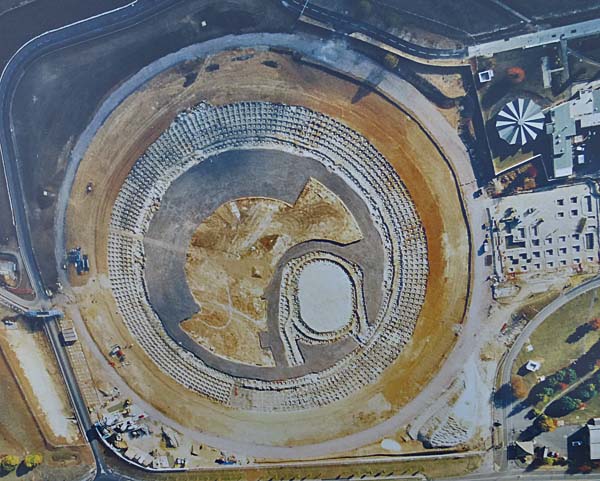 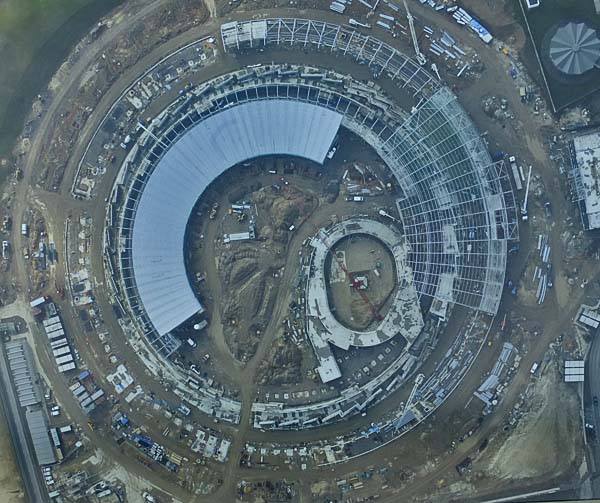 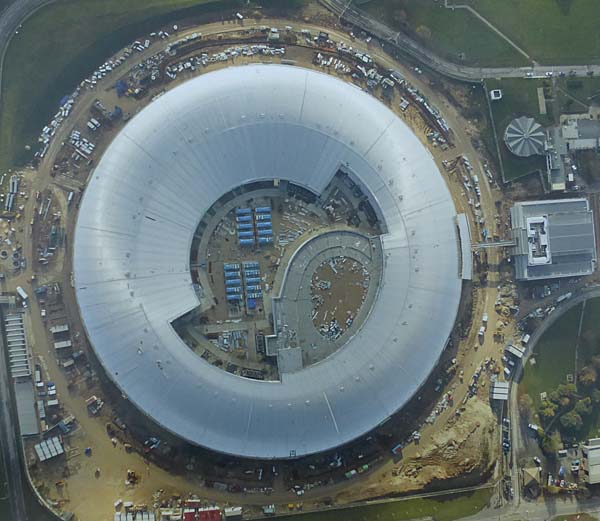 |
|
|
Diamond
Light Source, Harwell, Oxfordshire, UK
 Close Window  |